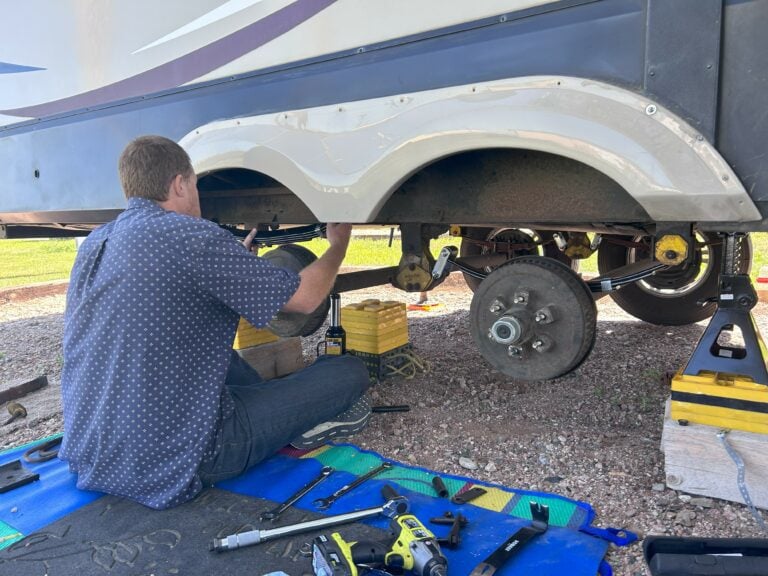This post may contain affiliate links. See our affiliate disclaimer here.
Ever wonder what really goes wrong when you live in an RV full-time? My husband and I have been living on the road since 2016. Over the years, we’ve made plenty of mistakes, had our fair share of bad luck, and dealt with a few total disasters.
In this post, I’m sharing six of the worst RV disasters we’ve experienced—from blowouts to an actual tornado on our very first travel day. These experiences were stressful, but each one taught us a lesson that made us better (and more prepared) RVers.
Let’s get into it.
Contents
Disaster #1: Our First Travel Day
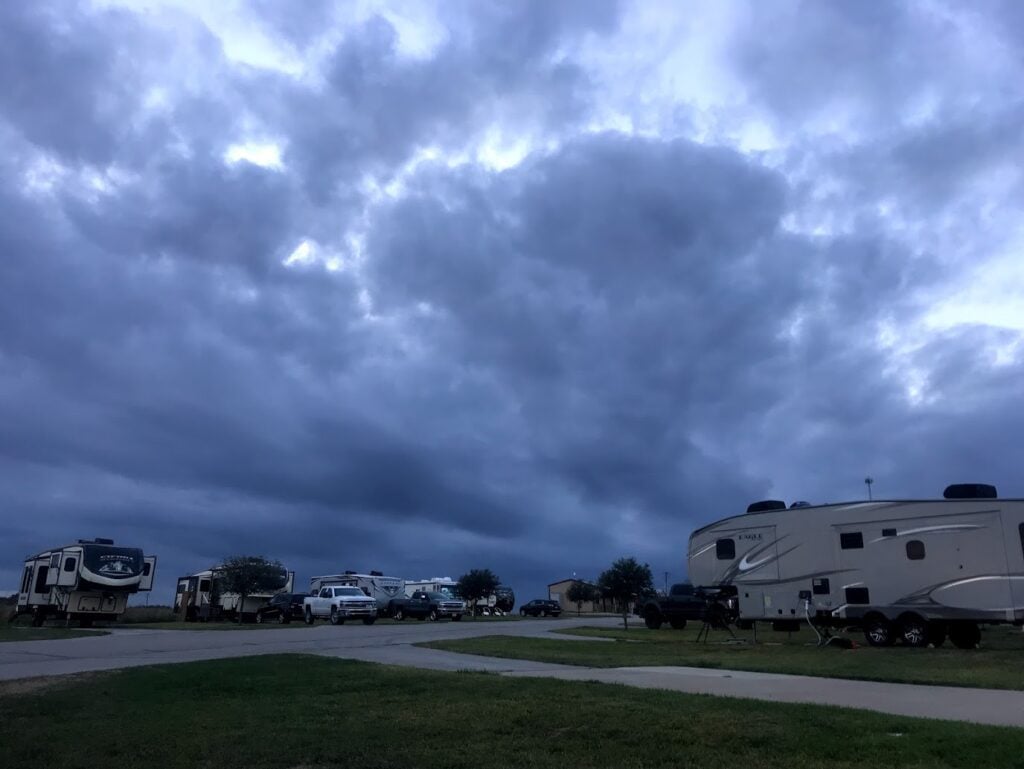
The night after our VERY first travel day back in June 2016, we were awakened in the middle of the night to phone alarms warning us that there was a tornado on the ground nearby. It was pouring rain, and there was no storm shelter or even a permanent building at the campground we were staying at.
After a very quick conversation, we loaded up our cat and dog and drove to a 24-hour gas station half a mile down the road, where we could go inside if needed. The tornado passed around us, and we were able to go back to our RV and get some sleep, but it was a stressful first travel day.
What we learned: After this experience, we always pay attention to two things—our weather apps and nearby storm shelters. Many campgrounds have a bathhouse or other building that serves as a storm shelter, but we always ask about the best place to go during check-in.
Disaster #2: Burst Water Line
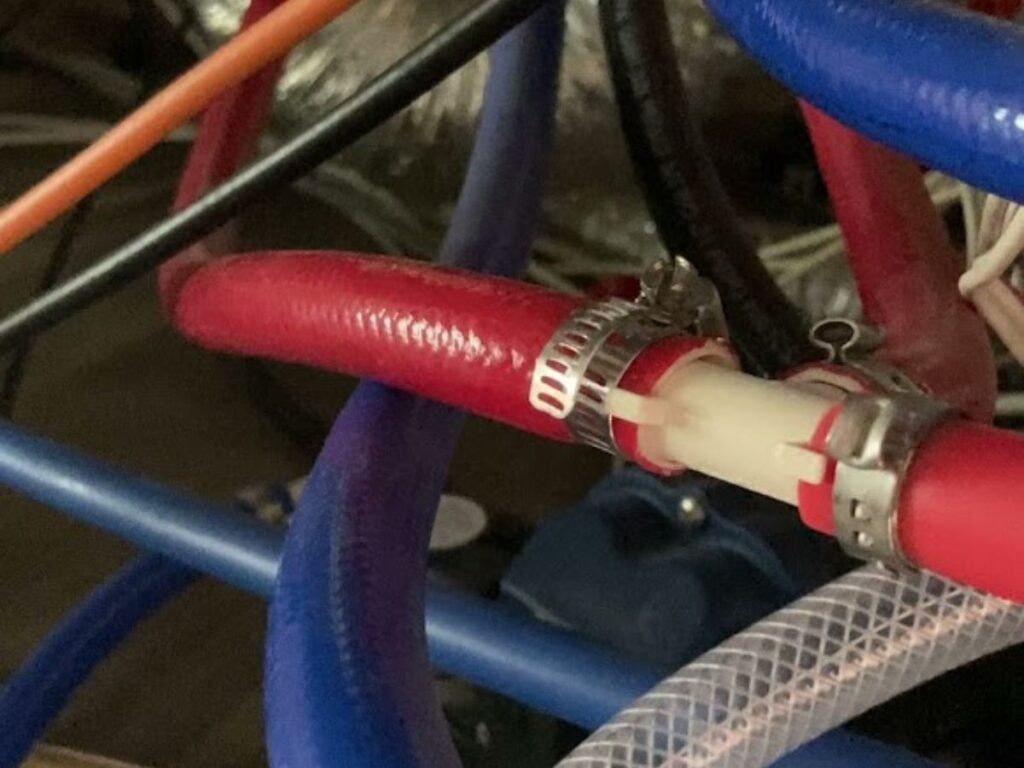
Our next disaster happened during our first winter as Florida snowbirds. We were sitting inside the RV when we heard a noise that sounded like water. After checking inside, we went outside and quickly found a broken plumbing line pouring water into our basement.
We turned off the water and started soaking it up with towels and a shop vac our neighbor brought over. Shout-out to good campground neighbors!
What we learned: We avoided a major fail because we were home when the plumbing connection came loose. Now, we always turn the water off before leaving the campsite. We also bought our own mini shop vac, which doubles as our regular vacuum and emergency cleanup tool.
Disaster #3: 3 AM Wake-Up Call
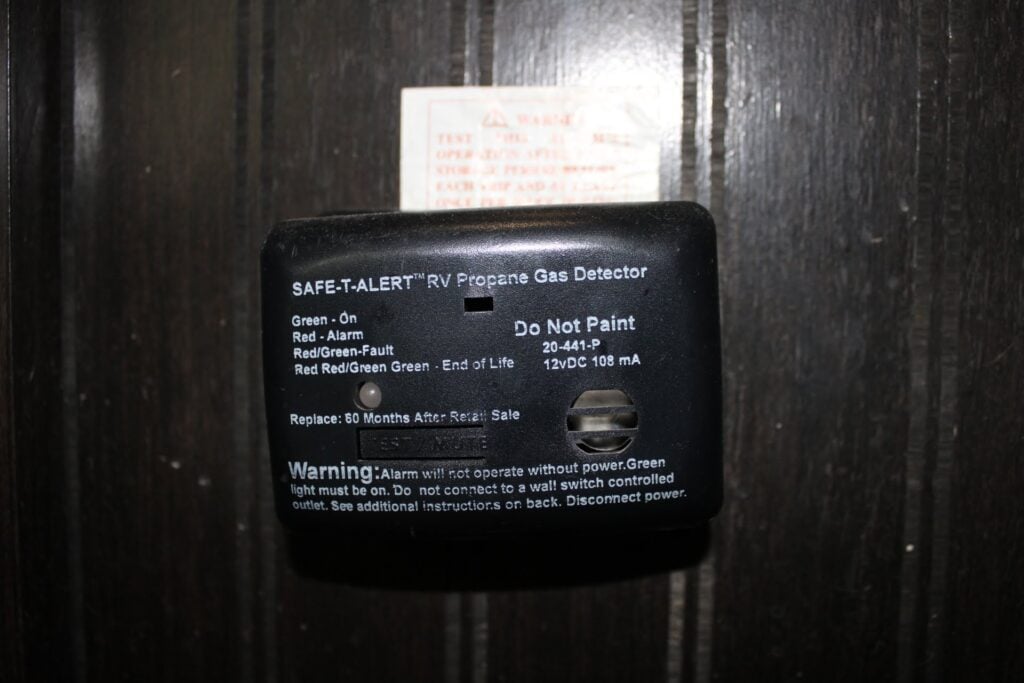
Sometime in our first year on the road, we woke up in the middle of the night to our gas alarm going off. It was 3 am, and we were tired and confused. The RV didn’t smell like propane… or did it?
Scared there was a gas leak, we got our pets out of the RV and opened the door and all the windows. We checked the propane connection, the stove, and reset the alarm. Eventually, we figured out everything was fine and went back to sleep with the propane shut off and the windows open.
What we learned: Gas alarms can be faulty, but it’s always best to trust them and verify there isn’t a potentially fatal leak. We also discovered that RV gas alarms have expiration dates printed right on them—check yours! And yes, we learned how to replace one.
Disaster #4: Major Blowout
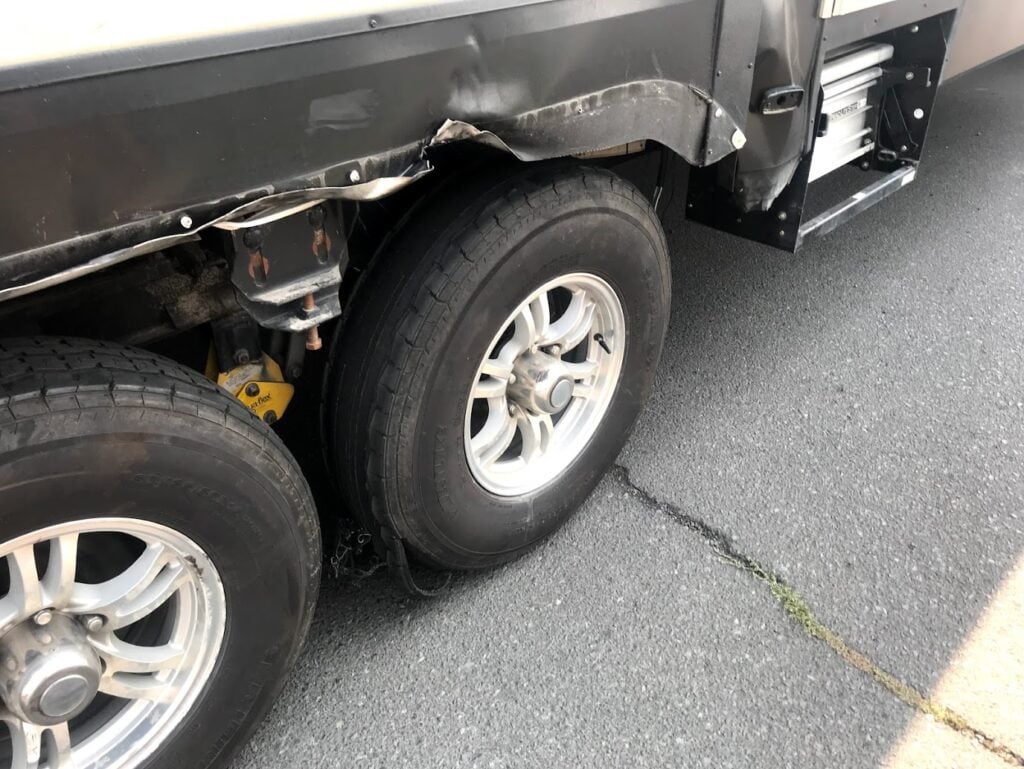
In our second year of RV travel, while driving through Oregon, we blew our second tire. The first blowout didn’t cause damage and was an easy fix. But this time, the tire really exploded and damaged our slide-out and a few other components.
It happened near an exit, so we were able to safely pull off the interstate. But the small town had no RV parks and only one repair shop—and it was Sunday. Thankfully, someone answered the phone and told us we could unhitch our RV at their lot and they’d take a look on Monday. We grabbed a hotel and crossed our fingers.
What we learned: First, always evaluate and replace all the tires on a new trailer. Ours were of poor quality from the factory. We upgraded them shortly after this disaster. Second, make sure your repair fund includes enough to cover emergency accommodations. That hotel cost us $600.
Disaster #5: Low Bridge Surprise

One day while driving through Georgia, Google Maps alerted us to a major traffic delay and suggested a detour. The new route followed a highway parallel to the interstate, so we took it without thinking much.
About 20 miles in, we saw a sign: 10-foot bridge ahead. Our fifth wheel was well over 12 feet tall—and there was no road to turn around before the bridge.
We ended up doing a 15-point turn in a long gravel driveway to avoid disaster.
What we learned: Never use Google Maps or any default GPS to navigate in an RV. Know your RV’s height and use a trucker’s atlas or RV-specific GPS. We use RV Life Pro now, and it’s made a huge difference.
Disaster #6: Broken Leaf Spring
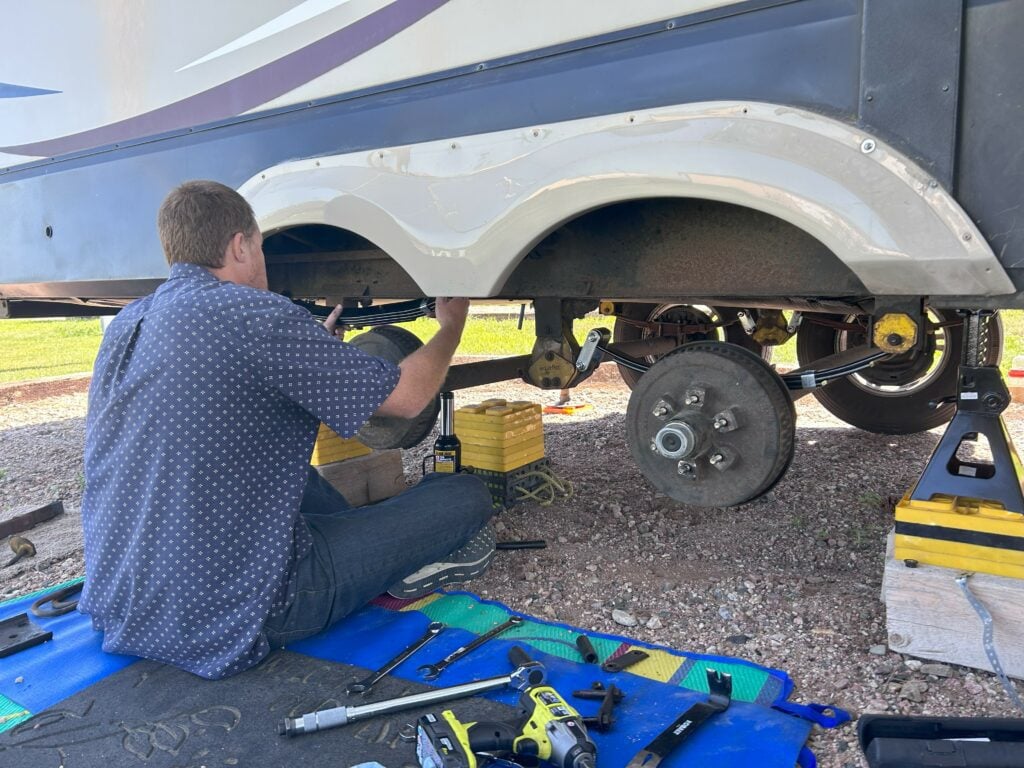
In summer 2023, we were on our way to a workamping job in Idaho. My husband felt something was off while driving, so we pulled over and found a broken leaf spring.
We were two days away from Idaho, and just four days away from our job start date. We pulled into the nearest campground, only to find out it would take over a week to get the right parts shipped for the repair.
What we learned: At this point, we’d been full-timing for 7 years. We had done the right maintenance, left wiggle room in our schedule, and things still went wrong.
Just like in regular life, in RV life, stuff breaks. Disasters happen. The key is staying flexible and rolling with it.
Some of these disasters were true emergencies. Some were just plain frustrating. And sure, you could call them “fails”—we do! But the truth is, every single one of these moments taught us something and made us more confident, experienced RVers.
If you’re new to RV life, take these stories as reminders to stay prepared, stay calm, and always have a backup plan.
Happy Camping!
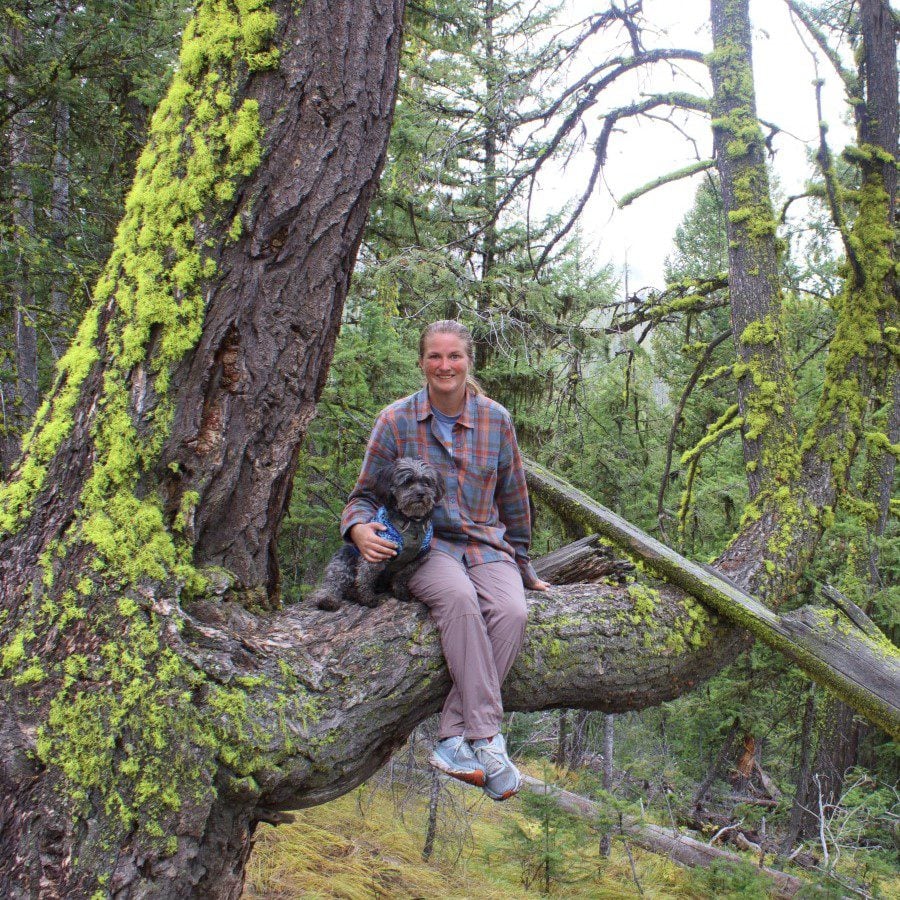
Christina Pate is a seasoned full-time RVer who, along with her husband Justin, has journeyed across the US, Canada, and Mexico. Drawing from her extensive travels, RV repairs and RV renovations, she founded Travels with Ted to guide and inspire fellow RV enthusiasts. Christina is also the co-author of The Owner’s Guide to RV Maintenance and the creator of My RV Log Book.

